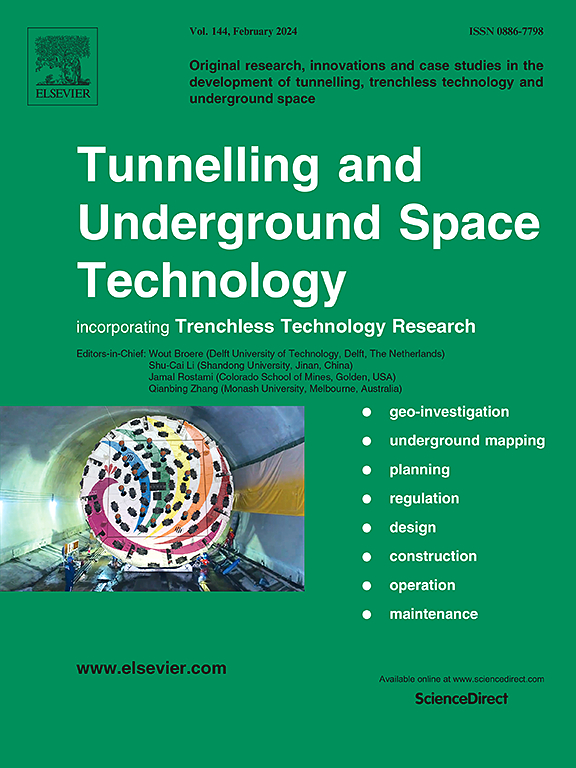行人视觉搜索效能与行为特征对地下轨道交通换乘站寻路性能的影响
IF 6.7
1区 工程技术
Q1 CONSTRUCTION & BUILDING TECHNOLOGY
引用次数: 0
摘要
本研究探讨了指路标志和个体差异对换乘空间,特别是地下铁路换乘站的指路性能的影响。以前的研究主要集中在标志的视觉效果或寻路结果上,很少考虑它们之间的相互作用。因此,本研究以重庆轨道交通冉家坝站为例,将寻路任务分为四类。现场寻路眼动实验分析和讨论了不同行人群体的标志感知特征、注视行为和寻路表现。采用k均值聚类算法对寻路性能进行分级评价。调查结果揭示了三个关键点。首先,不同人群的视觉搜索行为不同。男性对路标数量和内容的识别能力优于女性,有效视觉识别率(EVIR)和有效注视时间(EFDR)分别为73.1%和63.1%。此外,中年参与者的EVIR和EFDR最高,而老年人(经常花更多时间在无关的路标上)的EVIR和EFDR最低。标志上信息的类型和数量显著影响视觉搜索效果。其次,利用方向策略和选择最短路径可以提高寻路效率。第三,老年人组占53.8%的参与者表现出最低的寻路性能,其中老年女性是弱势群体。本研究从标志设计和行人角度提出建议,为提高铁路换乘站的寻路效率提供理论依据。本文章由计算机程序翻译,如有差异,请以英文原文为准。

Effects of pedestrians’ visual search effectiveness and behavioral characteristics on the wayfinding performance at underground rail interchange stations: A field test study
This study explored the impact of wayfinding signs and individual differences on wayfinding performance in interchange spaces, particularly within underground rail interchange stations. Previous research has primarily focused on either the visual effects of signs or wayfinding outcomes, with limited consideration of their interactions. Therefore, this study used Ranjiaba station, Chongqing Rail Transit, as a case study, classifying wayfinding tasks into four categories. On-site wayfinding eye-tracking experiments analyzed and discussed sign perception characteristics, fixation behaviors, and wayfinding manifestations among different pedestrian groups. The K-means clustering algorithm was employed for graded evaluation of wayfinding performance. The findings revealed three key points. First, visual search behaviors differed between demographic groups. Males outperformed females in identifying the quantity and content of guide signs, with an effective visual identification rate (EVIR) and an effective fixation duration rate (EFDR) of 73.1% and 63.1%, respectively. Further, middle-aged participants had the highest EVIR and EFDR, whereas seniors—who often spend more time on irrelevant guide signs—had the lowest rates. The type and amount of information on signs significantly affected visual search effectiveness. Second, using direction strategies and selecting shortest paths can improve wayfinding efficiency. Third, senior group accounted for 53.8% of the participants demonstrating the lowest wayfinding performance, with senior females representing a vulnerable subgroup. This study offers recommendations for enhancing wayfinding performance through sign design and pedestrian perspectives, providing theoretical insights to improve wayfinding efficiency in rail interchange stations.
求助全文
通过发布文献求助,成功后即可免费获取论文全文。
去求助
来源期刊

Tunnelling and Underground Space Technology
工程技术-工程:土木
CiteScore
11.90
自引率
18.80%
发文量
454
审稿时长
10.8 months
期刊介绍:
Tunnelling and Underground Space Technology is an international journal which publishes authoritative articles encompassing the development of innovative uses of underground space and the results of high quality research into improved, more cost-effective techniques for the planning, geo-investigation, design, construction, operation and maintenance of underground and earth-sheltered structures. The journal provides an effective vehicle for the improved worldwide exchange of information on developments in underground technology - and the experience gained from its use - and is strongly committed to publishing papers on the interdisciplinary aspects of creating, planning, and regulating underground space.
 求助内容:
求助内容: 应助结果提醒方式:
应助结果提醒方式:


